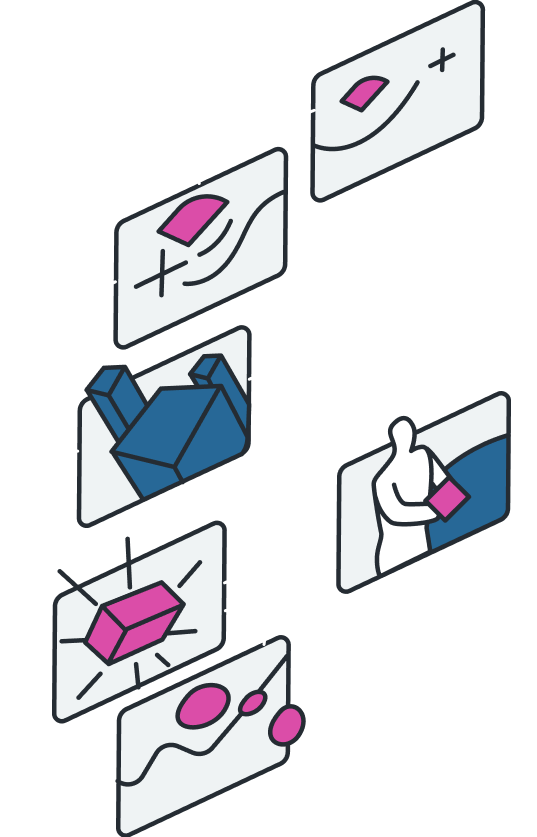The way we work and live and learn has changed. Almost twice as many people are working remotely than those going to a workplace, and over 80% of parents in the U.S. had children learning from home at some point since the pandemic started. And for good reason: the health and safety of our loved ones are at the top of all of our lists.
For everyone involved in education, from students, to staff, to parents, and partners, it’s our responsibility to ensure that not only do we educate our children, to set them up for the brightest possible future, but that we do so in a way that’s safe for everyone involved.
In recent years we’ve seen the rise of remote learning, and that has become even more top of mind for parents, students, and educators in the wake of COVID-19. Many school boards have given parents the option for their children to learn from home for the foreseeable future, and in these uncertain times, it may be that sooner rather than later that most if not all students are learning remotely.
With that in mind, we’re going to explore using videos in the classroom as teaching tools, what explainer videos can do for education, and how they can be such a valuable asset in your school’s teaching plan as you forge ahead.
Things have been particularly rough for children, parents, and especially for educators. According to a survey by Deloitte, 66% of parents faced high levels of anxiety about sending their kids back to school. It’s been unclear for weeks, if not months, when and how kids would return to school, which meant that many educators did not get the proper time to prepare fully in-depth curriculums for their students, or they weren’t able to adapt their teaching styles or their curriculums to online learning. Even with adequate preparation time, that can be a near-Herculean task for even the best of educators if it’s outside of their normal skillset, or they’re simply not particularly technologically-inclined.
Preparing a full online curriculum is a monumental task for even the most technologically adept teachers. This school year has been even more of a challenge as many teachers needed to prepare with little notice of what grades and subjects they’re going to teach, class sizes, and the subjects other teachers may be teaching so they can plan together. They also needed to think about creating in-person as well as online lesson plans. Not to mention the challenge of not knowing that they have the full attention of their students, and not knowing how to keep it.
At the best of times, a teacher’s job isn’t easy. They have a lot to worry about: grading papers, budgetary concerns, reading materials, creating tests and lesson plans, being engaging when they teach, interpersonal relationships between students, relationships with parents, and then their own personal lives. Now compound that with our ongoing health concerns, as well as with all of the new challenges that teaching online can present, and you have a whole lot of work that can very easily be stretching someone very thin.
Not every teacher is comfortable hopping in front of a camera. What if your teaching style doesn’t translate well to video, what if your internet connection isn’t stable, what if you can’t find somewhere in your home to peacefully and quietly be able to teach, how do you know students are paying attention, what rules are too invasive towards students, and so on?
At the end of the day, all of this is completely new for students, educators, and school boards alike, and it can be a lot to take in all at once. So, imagine having to consider educational video production on top of everything else.
Simply put, it would be unfair to expect educators to be able to take their lesson plans and adapt them into complete animated learning videos for their students. They barely have the time to eat breakfast in the morning and get ready for the day, let alone learn video production for educational videos.
However, teachers aren’t alone. That’s where Explainify can help with the use of videos in education, which means your teachers can worry about teaching, and not about the time-consuming, hard process of video production. Groups of videos that can teach students difficult concepts on their time while increasing student outcomes are invaluable during these times.
What Are Explainer Videos, and How Can They Help with Education?
Right, so, we’ve hinted at explainer videos, but let’s actually talk about them, and discuss why they can be so useful in a classroom setting.
On a normal day, it can be a lot to ask of a teacher to fully engage with students, and it can even be a lot to ask of students to fully engage with a lesson.
Simply put: the human brain doesn’t like monotony, and even the best laid teaching plans and the best teachers can get a bit monotonous. That’s why teachers use things like field trips and guest speakers—but, when many classrooms are half-remote, or fully remote, things like field trips, like bringing in guest speakers to help teach subjects that teachers may not be experts in aren’t as feasible.
Educational videos, especially animated educational videos can be used as a substitute while teaching students new, exciting lessons in new, exciting ways. Not only that, but they can also be taught on a schedule that works for students and teachers. They can be treated like homework, or home reading, in which students are required to watch videos on their own time, and the responsibility of ensuring that everyone pays attention is not solely upon the teacher’s shoulders.
Sitting at your desk for an extended period of time, simply listening to a professor or teacher—even the most interesting ones discussing the most interesting topics—can be a lot to ask of students, especially younger ones with so many distractions at home.
Animated learning videos not only help break up the monotony of a day, and give teachers and their students a break, but they also engage the mind differently, and it’s been proven that many students learn in different ways. Some students are much more visual learners than others, so utilizing animated learning videos can be a great way to help boost their capacity to learn.
Teachers don’t get do-overs when they’re teaching, and when you’re engaging with new lesson plans or concepts you’re not the most comfortable with, it can be a lot to try to teach. Especially if you’re having to teach remotely, and you’re also dealing with things like ensuring that your connection is solid so students can actually hear you and see you, and that students are paying attention. With animated educational videos, specifically animated explainer videos, you can be assured that their scripts have been perfected to ensure that they’re delivering information the best way possible— saying what they need to say, how they need to say it—so that everything is clear, concise, and easy to follow for students.
Explainer videos are especially great for visual learning in a sense that they can do things that might be impossible for teachers to do if they’re teaching remotely. In the classroom, if you’re trying to chart a timeline, or you’re referencing a map, or you’re trying to demonstrate a graph for students you have a blackboard or a map to use as a reference point. At home, you may be teaching out of your bedroom, kitchen table, or an office that doesn’t have these supplies. However, with an animated explainer video you have high-quality, dynamic, engaging images that students can reference, and that you don’t have to spend time creating yourself if you work with Explainify.
As educators know, students need different styles of teaching to fully enrich their educational lives, and with the current workload of teachers so heavy, it can be a lot to ask of teachers to figure out how to switch things up for students—or to even have the capacity or tools to help diversify learning for students when they’re doing all of this at home or in a reduced capacity at school.
With Explainify, educators can take a bit of pressure off their shoulders, knowing that they have access to an expert team who’ve worked on countless animated educational explainer videos that can help diversify learning by engaging students in new, exciting, and impactful ways. With animated learning videos, educators have access to give students the tools to engage with learning materials in engaging, dynamic, and unique ways. They also have access to styles of teaching and teaching tools they wouldn’t normally have via educational video production.
Explainify can ensure that you don’t have to do it all alone—that there’s one less thing you have to worry about. We’re here to help you, because right now everyone can use a little help. Get in contact to discuss how we can do this together.



